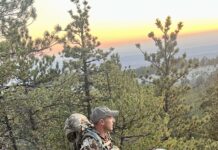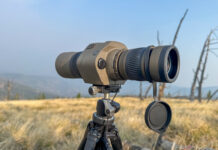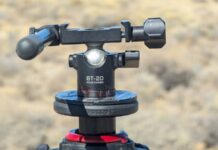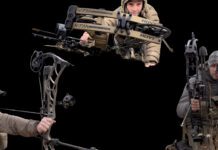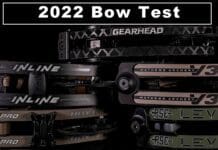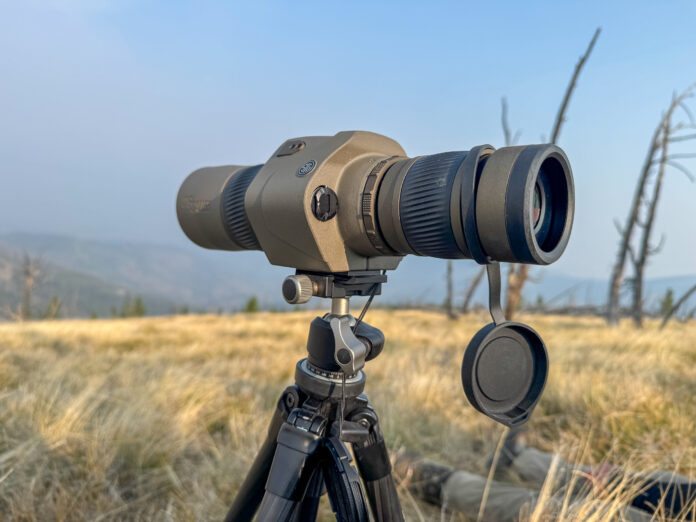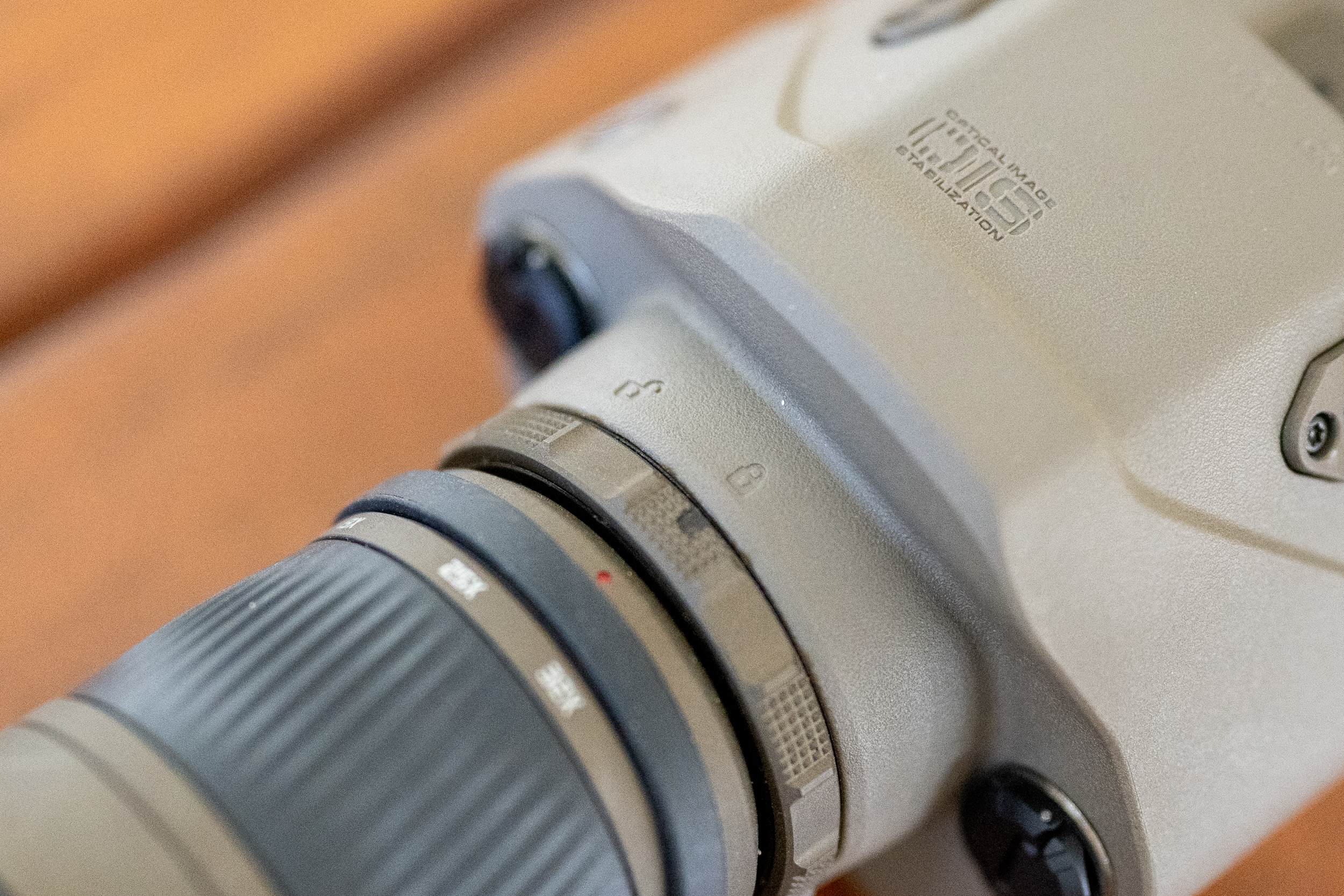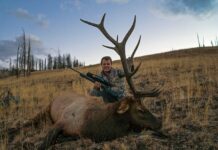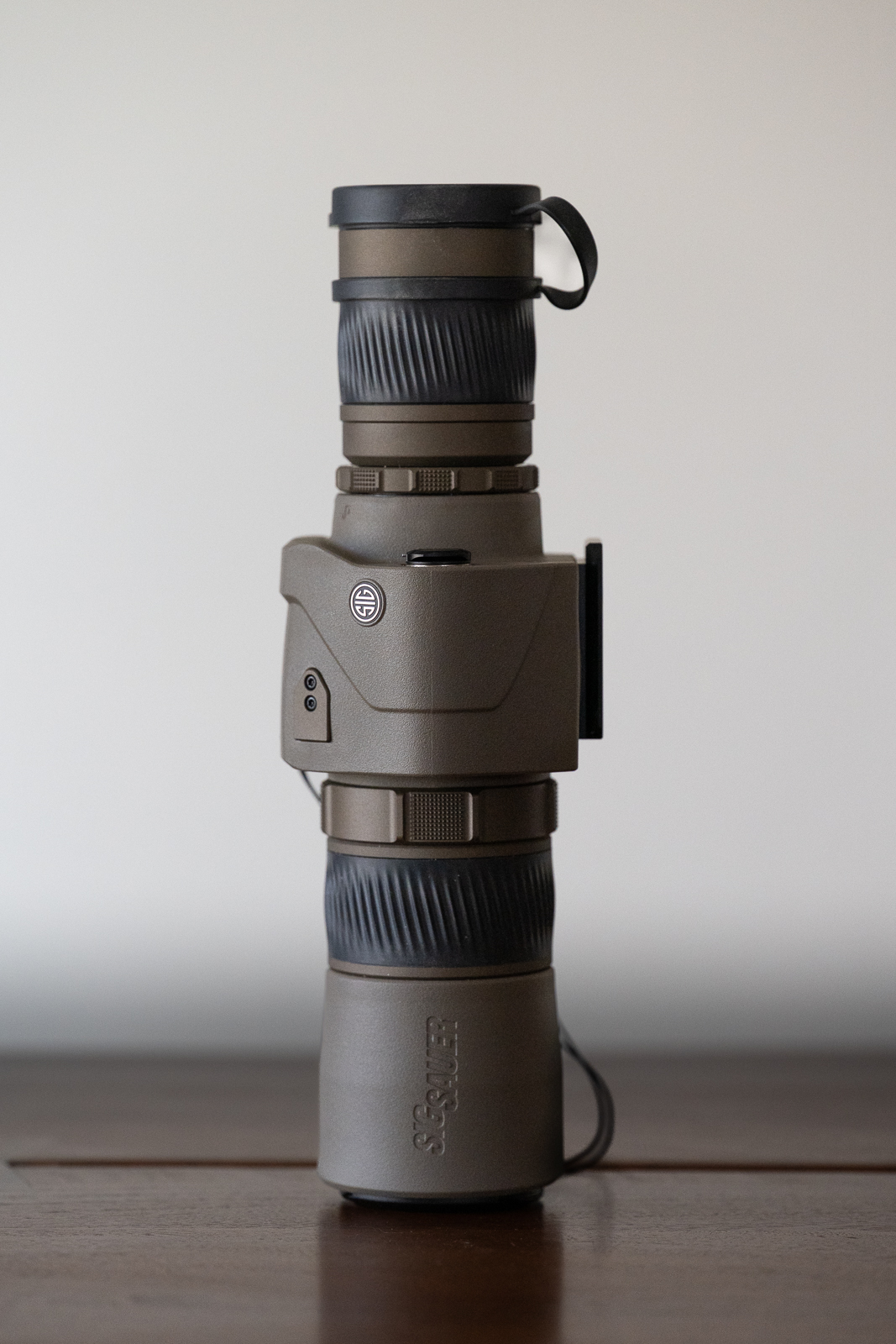
A spotting scope is a critical tool for the western hunter. A quality spotter serves many purposes including general hunting, scouting, range work, long range practice, trophy evaluation and many others. The advantages are obvious, where the spotting scope’s additional magnification picks up where the lower magnification binocular leaves off. Many times I have saved myself the effort of an extended stalk because the spotting scope allowed me to see an animal wasn’t the quality I was looking for. The disadvantages have always been the size and weight costs. Not just in the optic itself, but in the tripod and head to stabilize the high magnification view.
Stability
Sig Sauer has taken the stability problem on with technology. They are using optical stabilization to provide the user with mechanical stability, on and off a tripod. This is the same technology used in Sig’s popular Zulu series of stabilized binoculars. Lets take a look at how effective it is for a spotting scope.
Features
The Sig Oscar 6 HDX is a 60mm objective spotting scope mated to a removable 16-32x eyepiece. I am not aware of any other eyepieces available, but a subtended reticle eyepiece would be a nice addition.
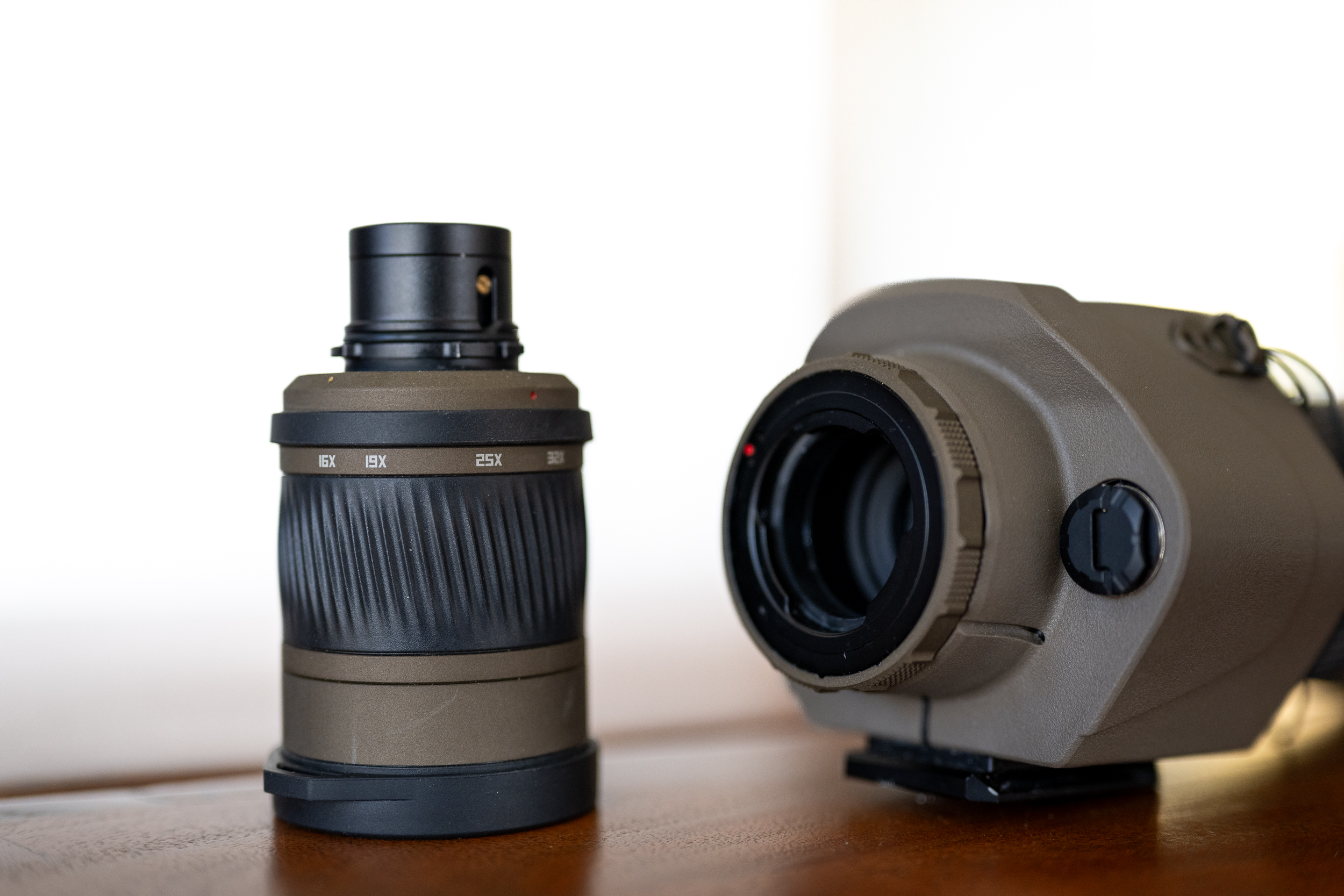
Stabilization comes from the floating element group in the center of the scope, hidden by the large housing around the middle of the scope. A collar switch just forward of the stabilization housing rotates a small distance from off and on. Just forward of the switch is a rubberized helical focus ring.
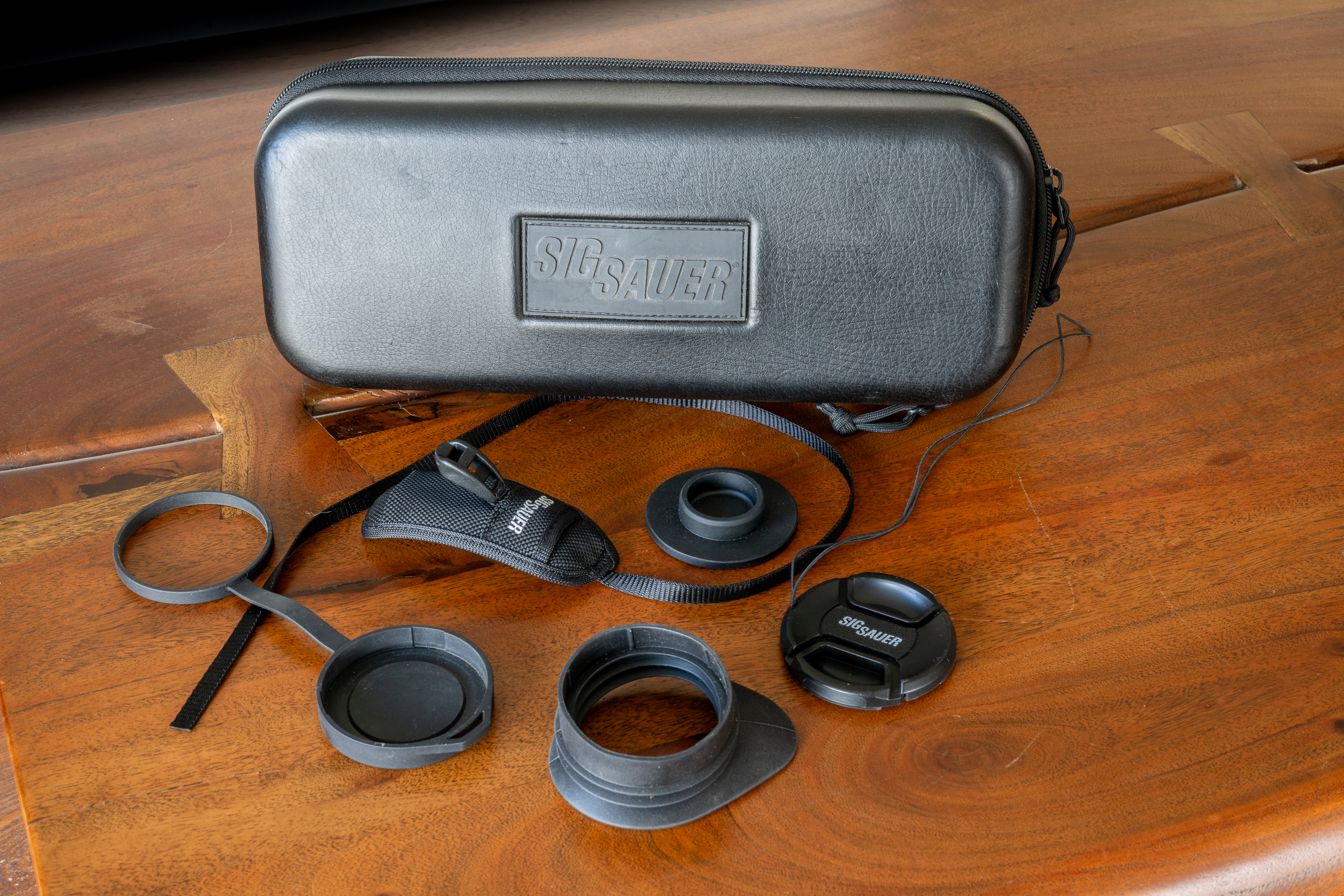
The scope comes with a screw in sunshade (which was missing from my test unit), lens caps, extended rubber eyepiece shade, hand strap, replaceable strap mounts, and semi-rigid case. Tripod attachment comes from the attached Arca-Swiss rail, but also accommodates other plate styles with a standard 1/4-20 socket. Integrated Arca-Swiss compatibility should be industry-wide, in my opinion.
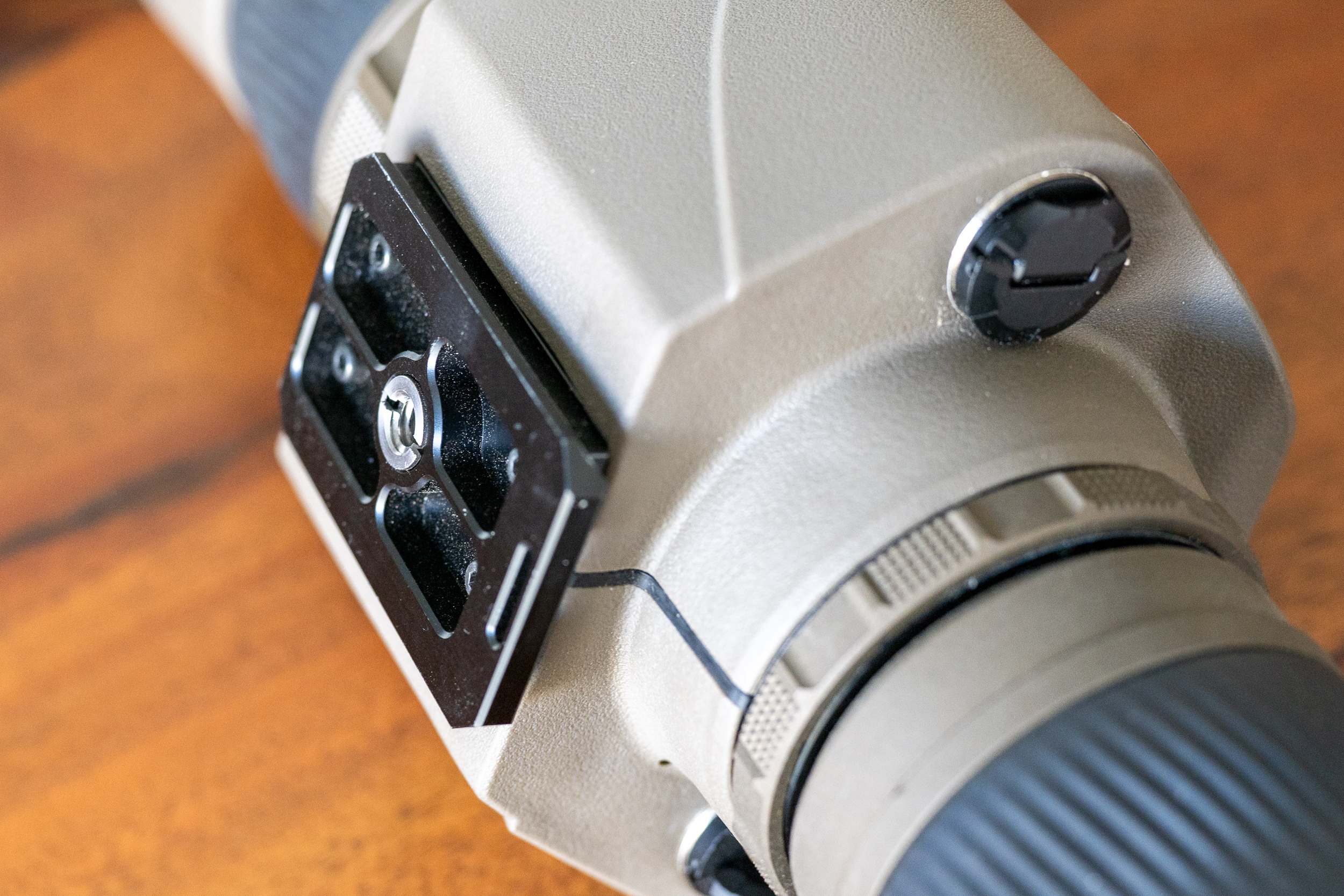
Build Quality
The Oscar 6 is robustly built, with a dense feel and sturdy rubber armor. I had the scope out in widely variable conditions, including a cold and sustained snowstorm, without any problems whatsoever. I never even considered taking the case in the field with me and just dropped the Oscar 6 in the spotting scope pocket of my pack.
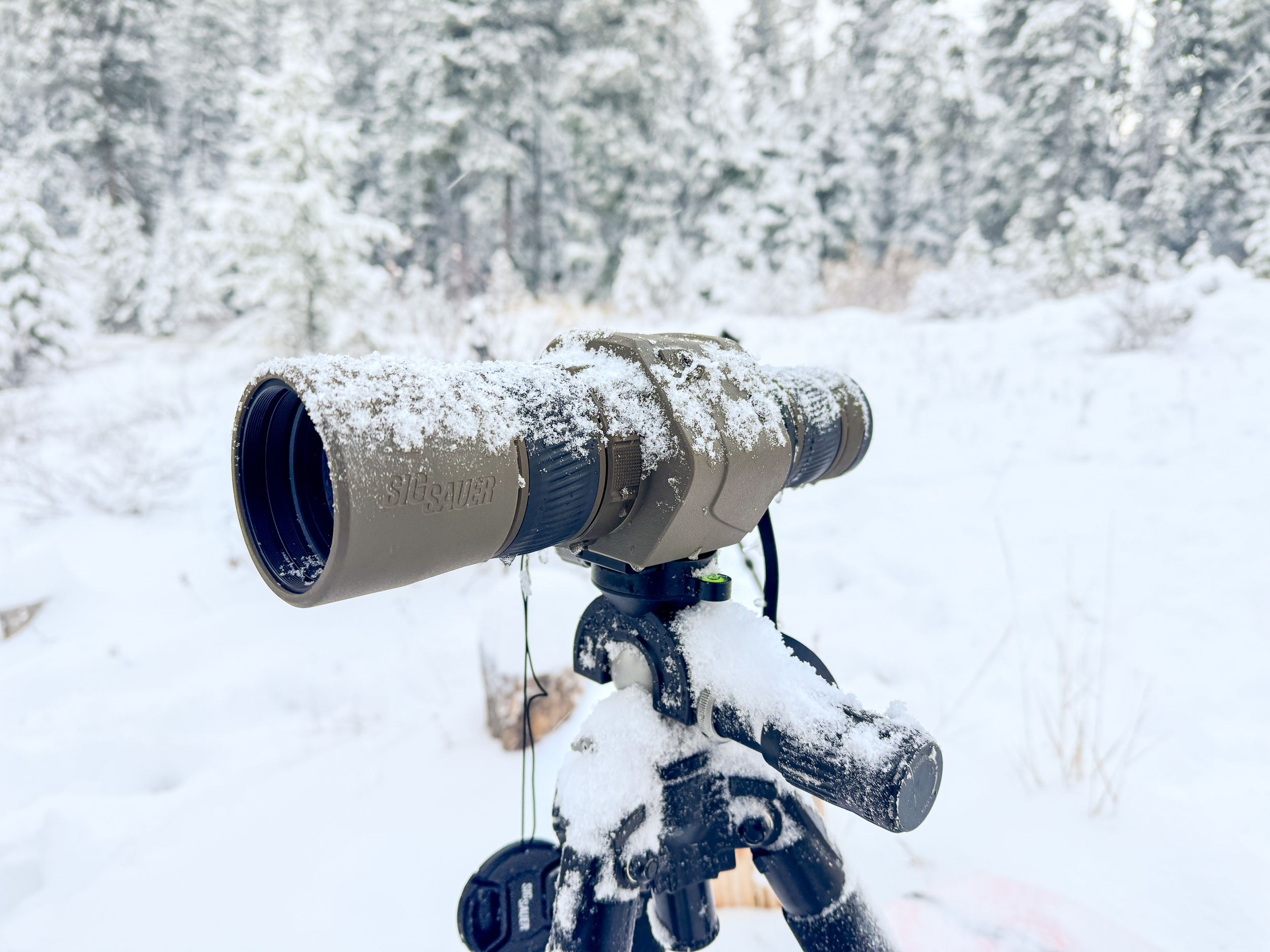
With the stabilization electronics and sturdy build, I was expecting a corresponding weight penalty. I was pleasantly surprised, however, when the scope weighed in at 3 pounds 7.4 ounces. That is less than the competing non-stabilized Maven S3 20-40X67 at 3 pounds 11.2 ounces. It is also remarkably compact at under 12 inches in length.
Optical Performance
Optical stabilization works by moving around internal glass elements to counteract gyro-detected movement in the optic. Keeping this in mind I fully expected some compromises in performance to accommodate the stabilization.
To appropriately test the Oscar 6, I needed to evaluate it twice. Once with stabilization ON and once with it OFF.
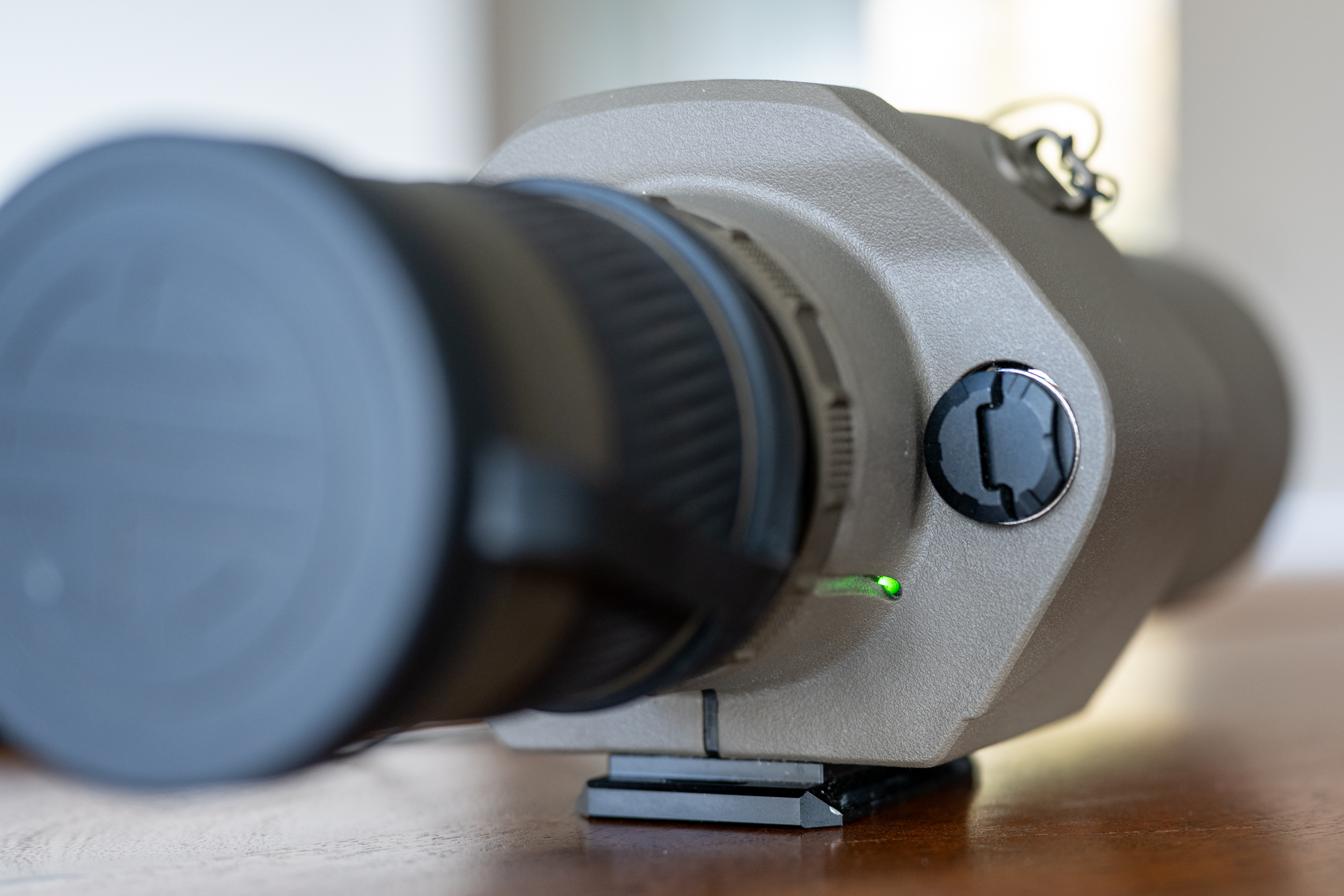
Resolution Testing
On an overcast day with stable air, I tested resolution.
With stabilization OFF, the center field performance of the Oscar 6 was pretty good. I was able to cleanly resolve small elements on the chart. Using the Maven S3 as a comparison and both set to my best approximation of 32x, I was able to resolve only one smaller element with the S3 than I was with the Oscar 6. I took this as good performance, and on par with other spotters in the Oscar 6’s price range. Of course, the Maven had a greater advantage in resolution when turned up to 40x.
Edge performance was not as good as the middle, with noticeable softening of the image at the edge.
Low light testing showed a similar disparity, although the disparity grew larger as the light fell dimmer, and the Maven was the brighter scope in the end.
With stabilization ON, sharpness took a noticeable hit. In the center, I could resolve three smaller elements on the chart with the stabilization OFF vs. ON. This was at 32x. At 16x, the difference was smaller, but still noticeable. The scope was definitely at its sharpest with stabilization off.
Distortion
At the lowest power of 16x, the Oscar 6 has a small amount of mustache-shaped pincushion distortion. This was pretty good performance.

At 32x, however, pincushion distortion is readily apparent.
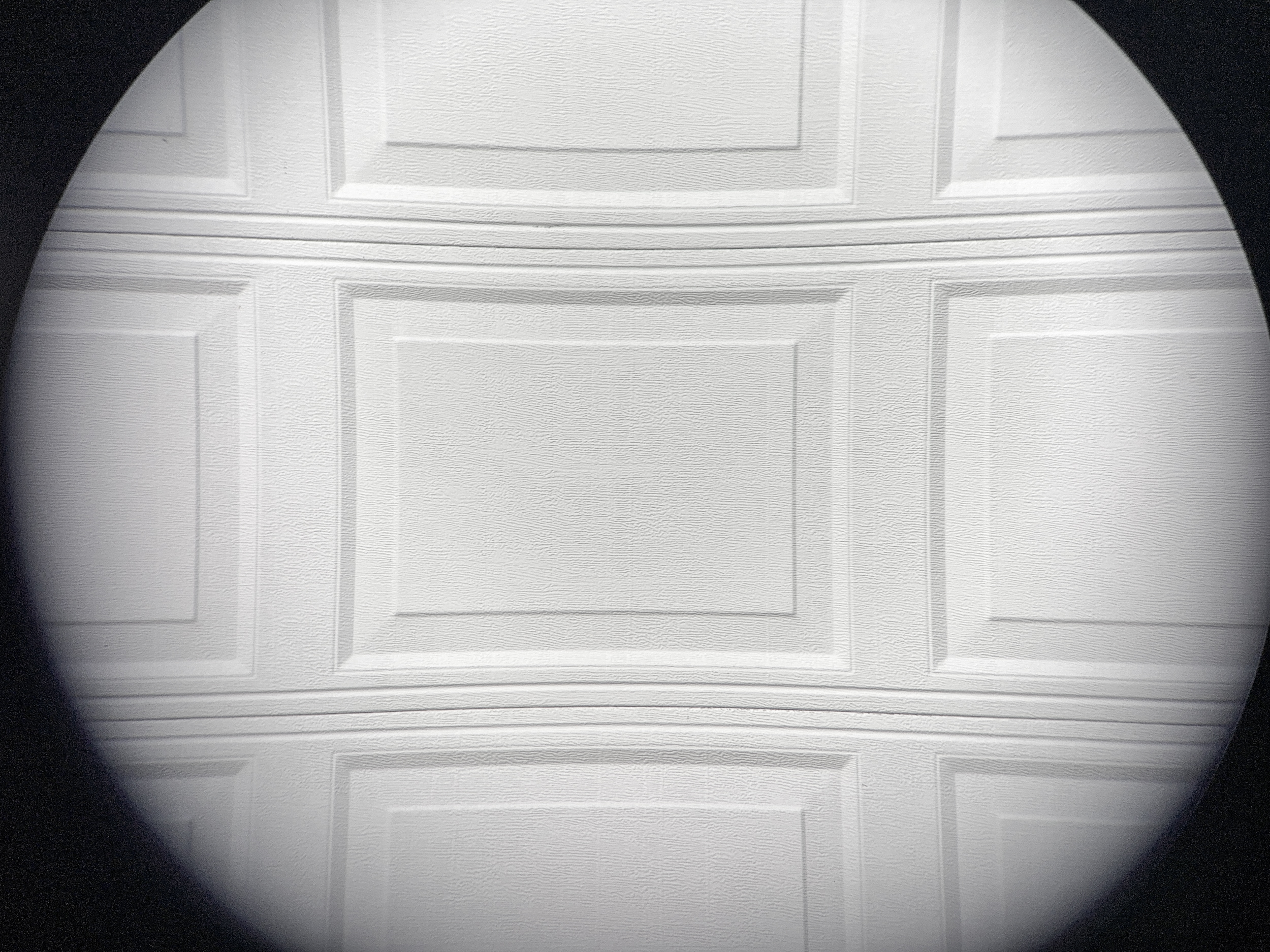
Chromatic Aberration
The centerfield chromatic aberration (CA) correction of the Oscar 6 is really good, and likely contributes to the good centerfield performance with stabilization OFF. This performance degrades off-axis though, and by the edge of the wide field of view there is obvious color fringing visible.
Stabilization
The stabilization technology of the Oscar 6 works. That is, with the stabilization on, the view through the eyepiece is quite settled, and the viewer eliminates the shake that accompanies most spotters when adjusting a tripod head. This stabilization is most impressive when hand-holding the scope. The spotter is absolutely useable hand-held even up to 32x. The hand-holding viewer will see greater detail through the stabilized Oscar 6 than hand-holding a non-stabilized spotter, even of better optical performance. The stabilization does impressively stabilize the view, and the reduction in sharpness isn’t readily noticeable.
The results are similar when resting the Oscar 6 on a backpack for support. The vibrations and shake are effectively gone, and a stable image is presented to the hunter.
On a tripod, the stabilization can steady a panning view, and the view in the wind, but in this use case, the reduced sharpness becomes quite noticeable.
Here is a quick video demonstration of the stabilization:
Digiscoping
Digiscoping with the Oscar 6 is much like any other spotter. I was able to get good results even handheld with stabilization ON. However, the reduced optical performance when stabilized is compounded by digiscoping where the process further degrades the image. For the best digiscoping quality I used the scope on a tripod with stabilization OFF.

Field Performance
I used the Oscar 6 for bowhunting elk, hunting antelope, and accompanying my son on a youth deer hunt. The stabilization feature was actually really welcome in the field. I liked being able to just put the stabilized scope up to my eye handheld for quick looks where I didn’t have to get a tripod set up. As a bonus, you get to feel like a pirate…
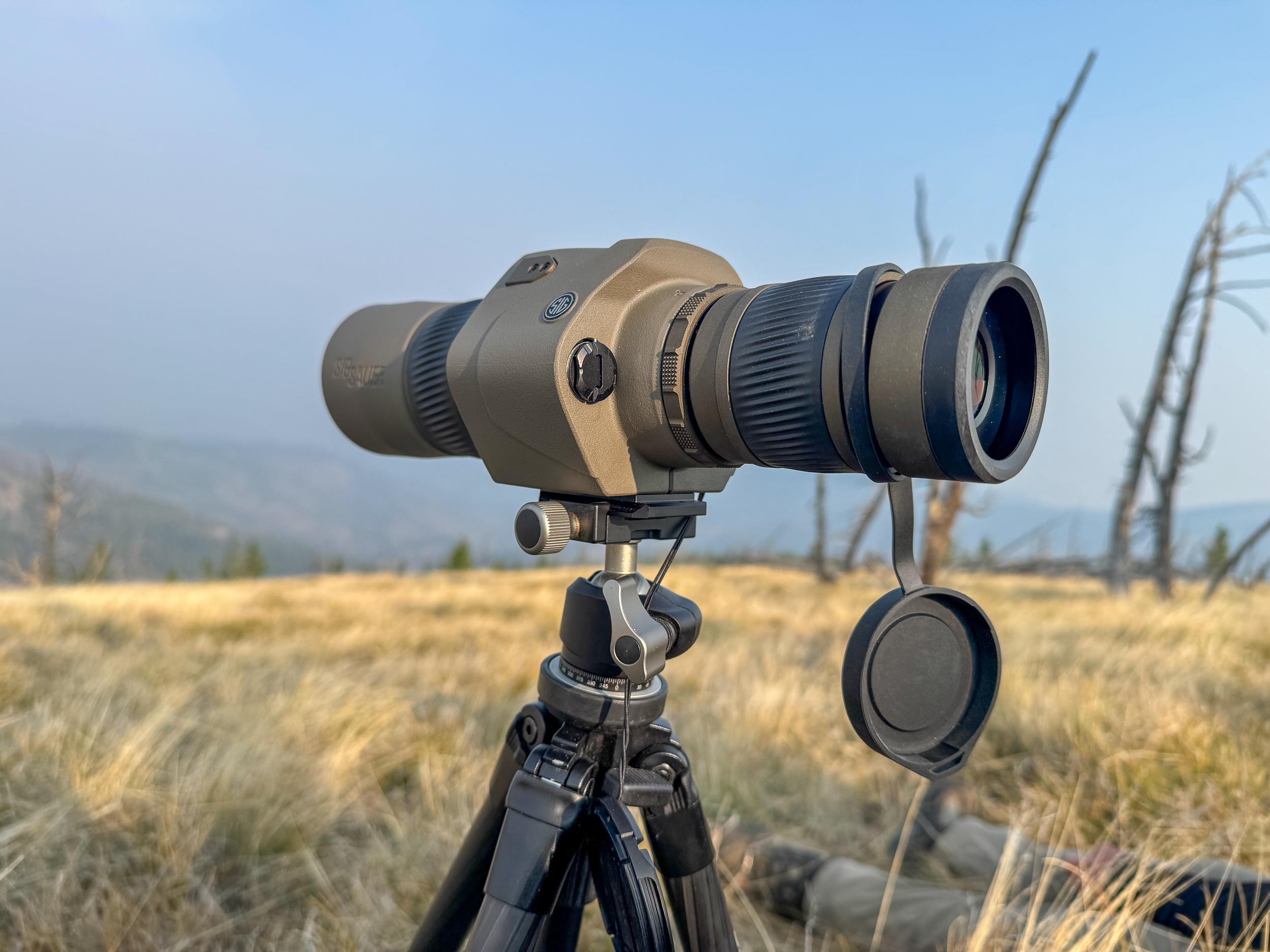
Being able to hand-hold the scope was convenient on my son’s deer hunt when he was using the tripod as a rifle support and I needed to check on the deer approaching in the distance. The view was well stabilized, and performed well enough to distinguish bucks from does at nearly a mile, although the reduced acuity made trophy evaluation difficult. Similarly, when antelope hunting, the stabilized view proved really handy when glassing out the truck window. In fact, this was my favorite use of the Oscar 6, and it did quite well for quick looks at distant antelope out the truck window.
When I had the scope on a tripod, I rarely used the stabilization. I usually had it off to achieve the highest possible resolution.
I appreciated the Oscar 6 runs on two readily available alkaline AA batteries, which makes keeping backups easy.
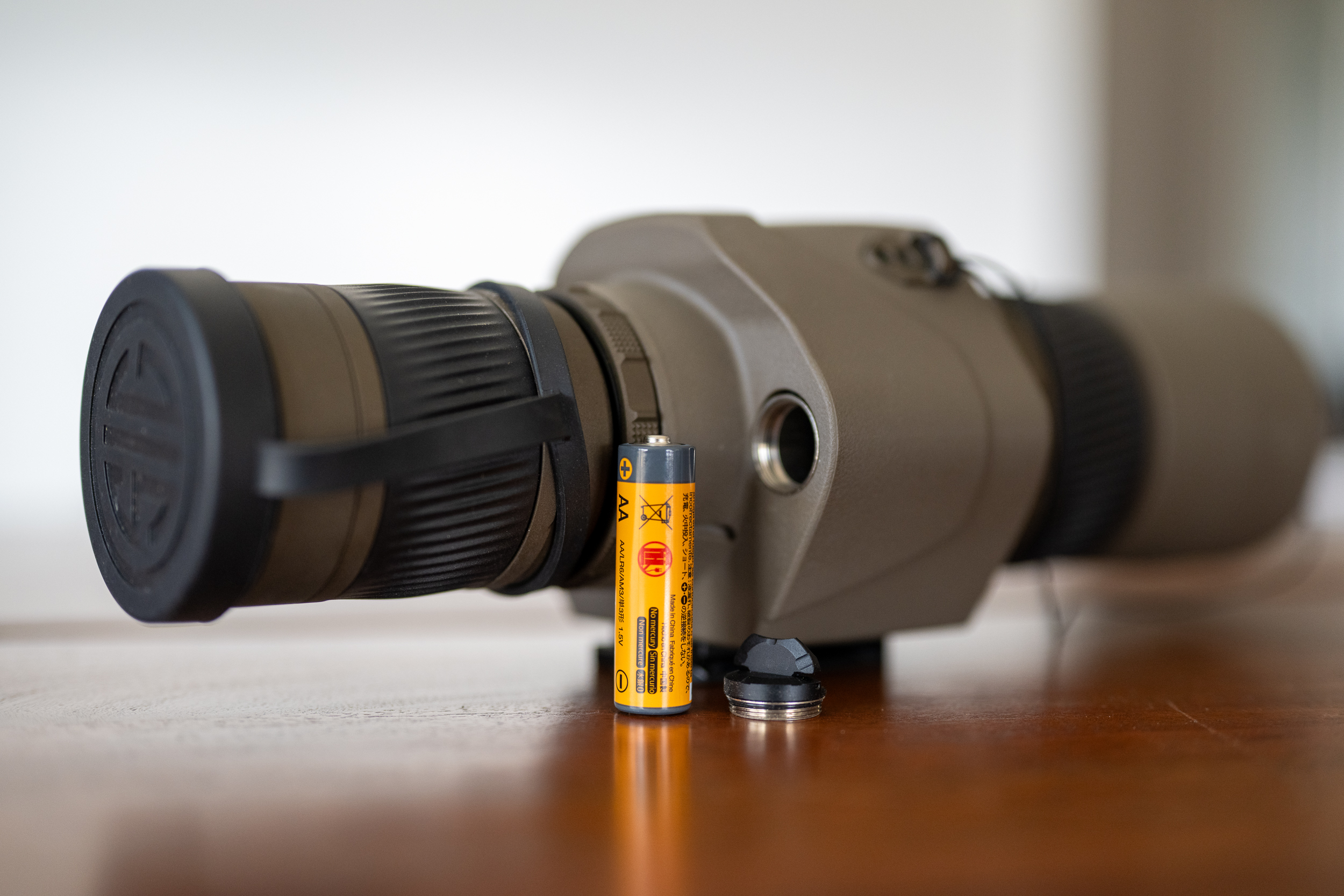
Conclusion
While stabilized sport optics aren’t new, they are definitely expanding in the hunting market. The technology isn’t a gimmick; it has many real uses in the field. I saw the potential with the Sig Sauer Oscar 6 HDX. A spotting scope with hand-holding versatility and resistance to wind shake is a welcome innovation to the western hunter. Handheld long-distance digiscoping could be revolutionary.
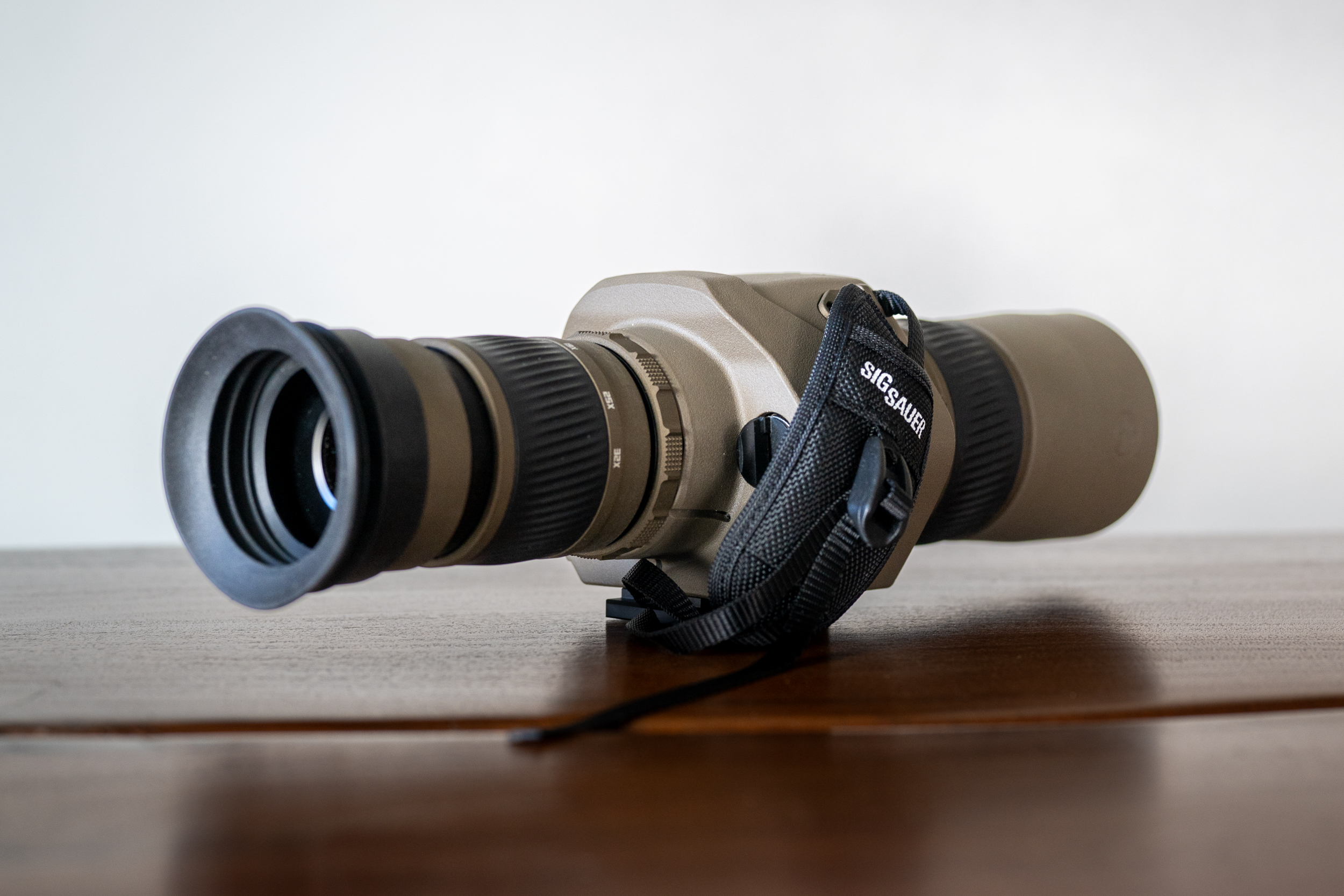
The Oscar 6 is at its best handheld when used for game identification and quick looks. It needs to have a tripod and stabilization OFF for the best performance in detail work.
At $1999, the Oscar 6 isn’t cheap. Its biggest threat is the competition at this level. Hunters can spend $200 less and get the Maven S3 with better optical performance, a bigger objective, and more magnification. Hunters can also pay $200 more and get the Kowa TSN-55 with more magnification, less weight, and better optical correction.
The Oscar 6 is for the hunter who really needs the stabilization feature and can put up with the optical compromises.
Comment or ask Matt questions here.

